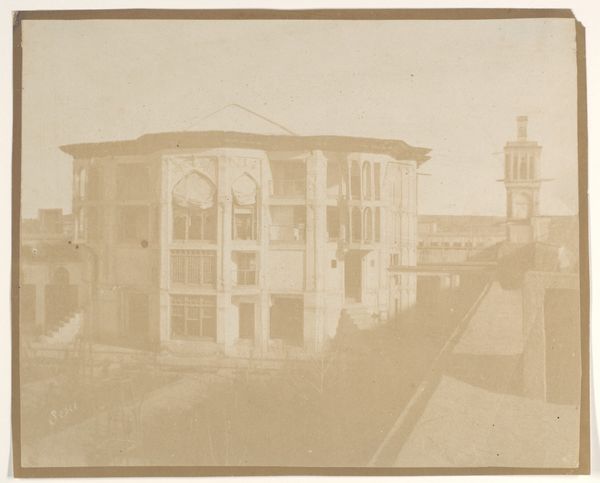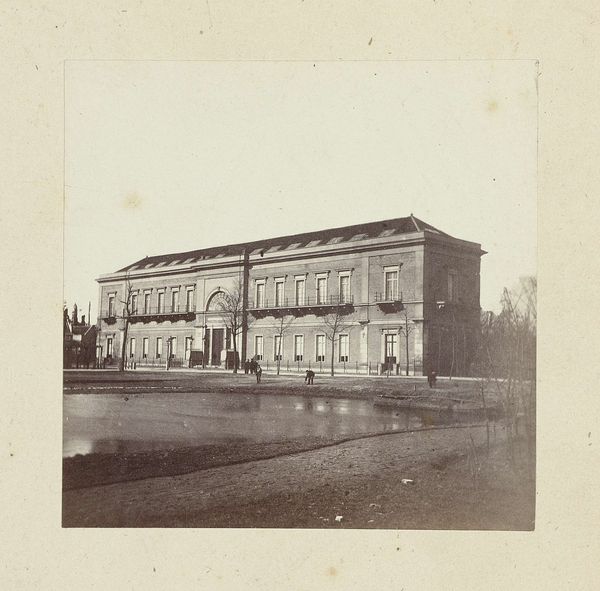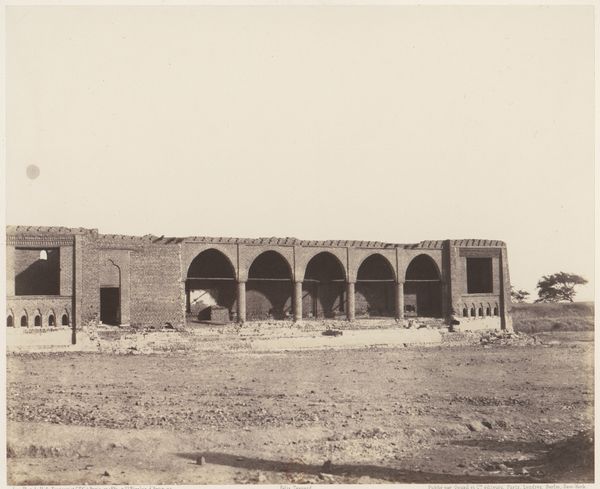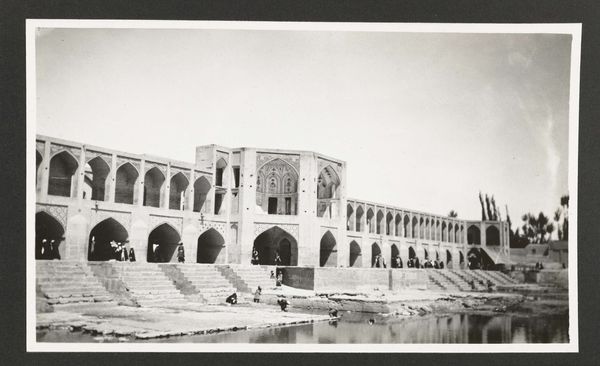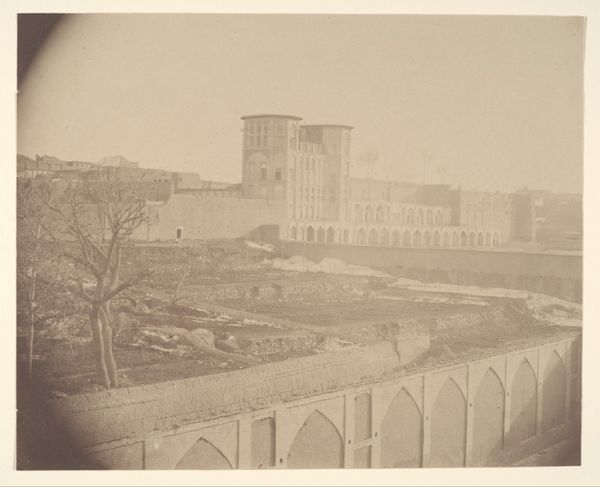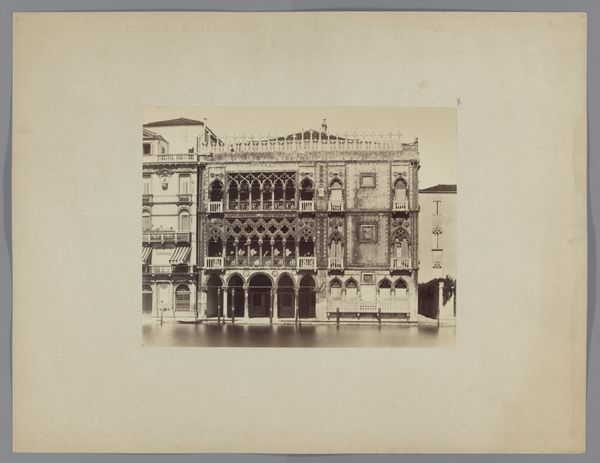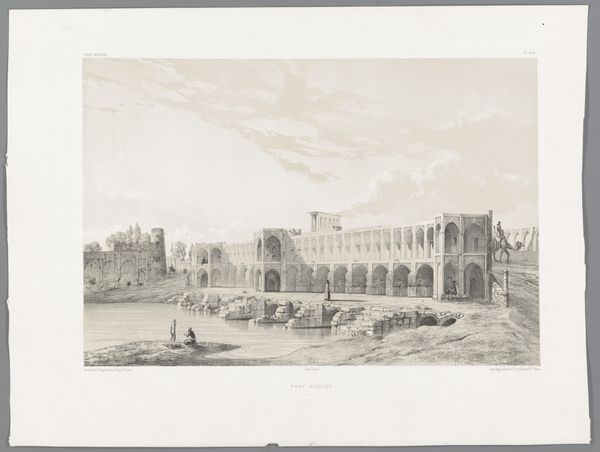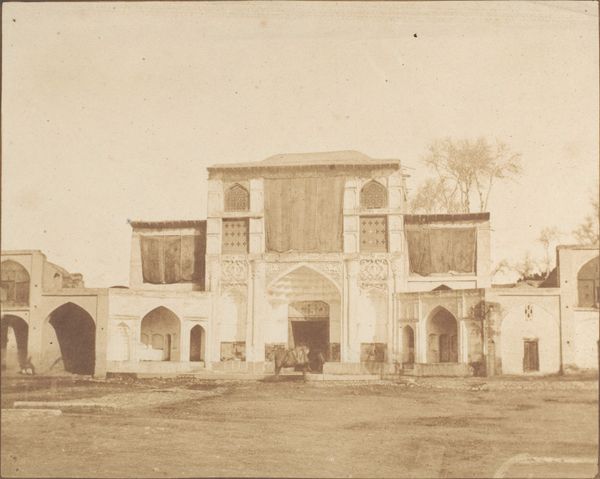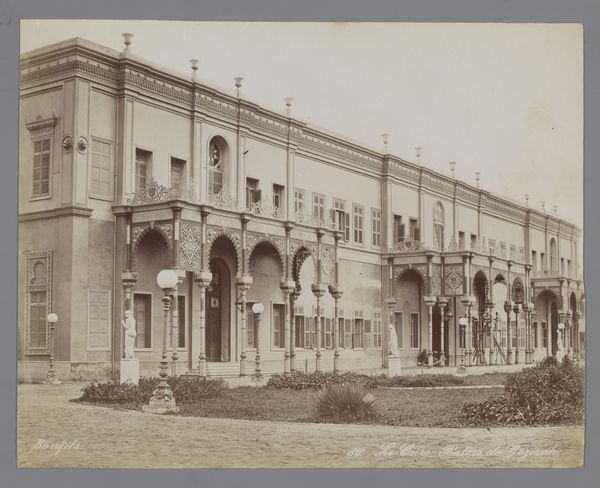![[Summer residence (Qasr) of the Shah, Emarat-e xoruji, Teheran, Iran] by Luigi Pesce](/_next/image?url=https%3A%2F%2Fd2w8kbdekdi1gv.cloudfront.net%2FeyJidWNrZXQiOiAiYXJ0ZXJhLWltYWdlcy1idWNrZXQiLCAia2V5IjogImFydHdvcmtzLzY2Y2E4YjNlLTgxYjItNDVlYy1hYmM0LTIyMTIwMmM3NGZhYy82NmNhOGIzZS04MWIyLTQ1ZWMtYWJjNC0yMjEyMDJjNzRmYWNfZnVsbC5qcGciLCAiZWRpdHMiOiB7InJlc2l6ZSI6IHsid2lkdGgiOiAxOTIwLCAiaGVpZ2h0IjogMTkyMCwgImZpdCI6ICJpbnNpZGUifX19&w=3840&q=75)
[Summer residence (Qasr) of the Shah, Emarat-e xoruji, Teheran, Iran] 1840 - 1869
0:00
0:00
daguerreotype, photography, architecture
#
landscape
#
daguerreotype
#
photography
#
islamic-art
#
architecture
Copyright: Public Domain
Curator: Looking at this, I’m immediately struck by its reflective quality— the stillness, the sepia tone. It's serene, but somehow also… haunted. Editor: Indeed. What we see here is a daguerreotype, one of the earliest forms of photography, capturing the Summer residence (Qasr) of the Shah, also known as Emarat-e Khoruji, in Teheran, Iran. It's dated sometime between 1840 and 1869 and made by Luigi Pesce, part of our collection at The Met. Curator: So, the shadows and light... they weren't simply observed, but chemically fixed, making tangible an otherwise fleeting reality. And in Islamic art, reflections and mirroring often hold symbolic meaning, gesturing toward transcendence and the multiplicity within unity. Editor: Absolutely. And think about the Shah, a figure of immense power, choosing to immortalize his summer retreat. This photo normalizes Western aesthetics of architecture and also power, it becomes more and more evident of the global changes during the Qajar dynasty. We see this adoption reflected in the very structure. But it also serves as a marker of societal inequalities of a ruling elite as many did not have the same access. Curator: Those covered windows feel intentionally placed; they speak of ritual. Is the covering an indication of an event? Of performance, perhaps? What stories are told by the hidden spaces just outside of the camera’s view? It's fascinating how this photographic surface transforms a building into something far more evocative. Editor: It raises critical questions about representation and power, and how these historical depictions contribute to contemporary perceptions of the region, what it was and could have become if left alone. It also complicates traditional understandings of orientalist images, blurring the lines between Western gaze and local agency, as Pesce may have been acting at the behest of the Shah himself. Curator: True. These layers are incredibly complex. Considering the cultural weight this summer palace held, this photographic decision adds another dimension to the historical significance it portrays. Editor: Precisely. It pushes us to understand the work's place in the tangled webs of art, history, and lived realities.
Comments
No comments
Be the first to comment and join the conversation on the ultimate creative platform.


